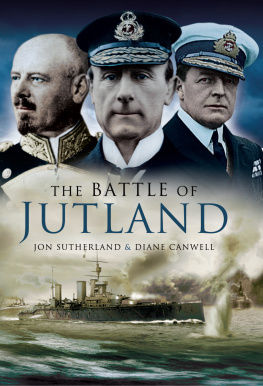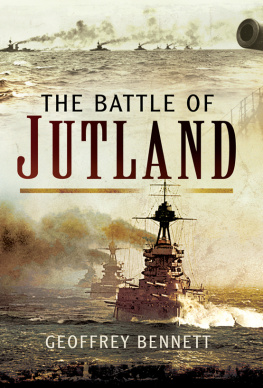First published in 1920 as
Germanys High Sea Fleet in the World War
by Cassell and Company, Ltd, London, New York, Toronto and Melbourne
This edition published in 2014 by Frontline Books,
an imprint of Pen & Sword Books Ltd,
47 Church Street, Barnsley, S. Yorkshire, S70 2AS
www.frontline-books.com
Introduction copyright Marcus Faulkner and Andrew Lambert, 2014
ISBN: 978-1-84832-209-7
All rights reserved. No part of this publication may be reproduced, stored in or introduced into a retrieval system, or transmitted, in any form, or by any means (electronic, mechanical, photocopying, recording or otherwise) without the prior written permission of the publisher. Any person who does any unauthorized act in relation to this publication may be liable to criminal prosecution and civil claims for damages.
CIP data records for this title are available from the British Library
For more information on our books, please visit
www.frontline-books.com, email info@frontline-books.com
or write to us at the above address.
Printed and bound by CPI Group (UK) Ltd, Croydon, CR0 4YY [TBC]
I F, as Winston Churchill famously remarked, Admiral John Jellicoe was the only man on either side who could have lost the Great War in an afternoon, then by extension Admiral Reinhard Scheer was the only man who could have achieved victory in so few hours. Reinhard Scheer, the longest serving of the four wartime commanders of Imperial Germanys High Sea Fleet, was the most influential wartime German naval officer. His thirty-two months commanding the fleet covered some of the most important events not only of the war at sea, but also the entire conflict the Battle of Jutland or Skagerrakschlacht, 31 May to 1 June 1916, and the German resumption of unrestricted submarine warfare on 1 February 1917 which was instrumental in bringing in the United States on the side of the Entente powers. In August 1918 Scheer was promoted to Chef des Admiralstabs (Chief of the Naval Staff) after the incumbent, Admiral Henning von Holtzendorff, tendered his resignation to the Kaiser in late July owing to ill-health. He remained in this position until the end of the war, before resigning from his post on 14 November, and retiring from the navy on 17 December.
Born in 1863, Scheer joined the Imperial Navy as a cadet in 1879 and his career path followed the usual combination of seagoing, training and staff appointments. During the 1880s he served extensively with the East Africa Squadron and also underwent training as a torpedo specialist. It was in this capacity that he came to the attention of Alfred von Tirpitz, who brought Scheer to work in Torpedo Section of the Reichsmarineamt (Imperial Naval Office) when he became Secretary of State in 1897. Scheers career continued to prosper and his first command was the light cruiser Gazelle before in 1905 he was promoted to Kapitn zur See. His next seagoing command was the pre-dreadnought battleship Elsa which he served in for two years until 1909. He then became Chief of Staff to Henning von Holtzendorff, who was in command of the High Sea Fleet, and was prompted to flag rank. Between late 1911 and 1912 he again served in the ministry in Berlin before he took command of Squadron II of the High Sea Fleet with its six pre-dreadnought battleships in January 1913. When war broke out in August 1914 he was still in command of the squadron, but in the meantime been prompted to Vice-Admiral. In January 1915 he assumed command of Squadron III, consisting of the newest and most powerful battleships the Imperial Navy possessed.
From the Imperial Navys perspective the war did not conform to pre-war expectations that there would be a decisive clash between the British and German fleets at the outset of the conflict. The British, with their advantage in capital ship numbers and superior geographic position did not need, nor by 1914 planned, to impose a close blockade of the German coastline. Thus the conditions for a decisive battle in the lower North Sea in which British numerical superiority might be whittled away by destroyer torpedoes, submarines and mines, allowing a reasonable chance of German success, would never be met. If the British did not come south, and did not offer battle under conditions favourable to the Germans, what could the High Sea Fleet do, and what value did the costly and controversial Imperial Navy have to the German war effort? As the war continued month after month the political desire to maintain the fleet as a measure of power for post-war diplomacy steadily lost relevance. In addition the Kaiser had stipulated that the fleet should not be risked unnecessarily, which only added to the dilemma faced by the navys leadership.
Admiral Friedrich von Ingenohl, who took the High Sea Fleet to war in August 1914, attempted to use small engagements to reduce British strength or corner detached elements of the Royal Navys Grand Fleet. Yet no advantage was attained and both sides had to contend with the impact of mines, aviation and submarines. In two engagements, the Battle of Heligoland Bight, 28 August 1914 and at Dogger Bank, 24 January 1915, the Germans sustained greater loses. Von Ingenohl was replaced by Hugo von Pohl following Dogger Bank, but this changed little to the strategic realities the Germans faced. Under von Pohl the High Sea Fleet operated timidly, putting to sea less often as a complete formation than in 1914 and largely remaining in close proximity to the German coast. A first attempt to use unrestricted U-boat warfare was short lived; the sinking of the RMS Lusitania caused a diplomatic crisis with the United States in May 1915. In January 1916 von Pohl was taken ill and relieved of his command. He would die of liver cancer before the end of February.
On 18 January Reinhard Scheer was appointed Commander-in-Chief of the High Sea Fleet. Within the navy he was widely acknowledged as being the best choice and a man of action. Scheer was determined to inject a new lease of life into the German naval campaign in the North Sea and while the Grand Fleet still needed to be avoided, except for in favourable circumstances, he envisaged a much more aggressive use of surface and U-boat forces backed up by Zeppelins for advanced reconnaissance. The Kaiser approved Scheers plans and the first operation in late April was another coastal bombardment by German battlecruisers, this time of Lowestoft and Yarmouth, designed to destroy any forces sent out to defend against the German attack. In the event the bombardment did little damage while an opportunity was missed to inflict damage on the weaker British Harwich Force, consisting of light cruisers and destroyers.
With the German foreign office bringing another phase of unrestricted submarine warfare to a rapid end in April Scheer chose to withdraw most U-boats from commerce warfare to support fleet operations in the North Sea. Employing U-boats to attack enemy shipping, while adhering to the restrictive requirements of Prize Law, was generally ineffective while simultaneously exposing the boats to considerable danger. Instead they would be deployed









